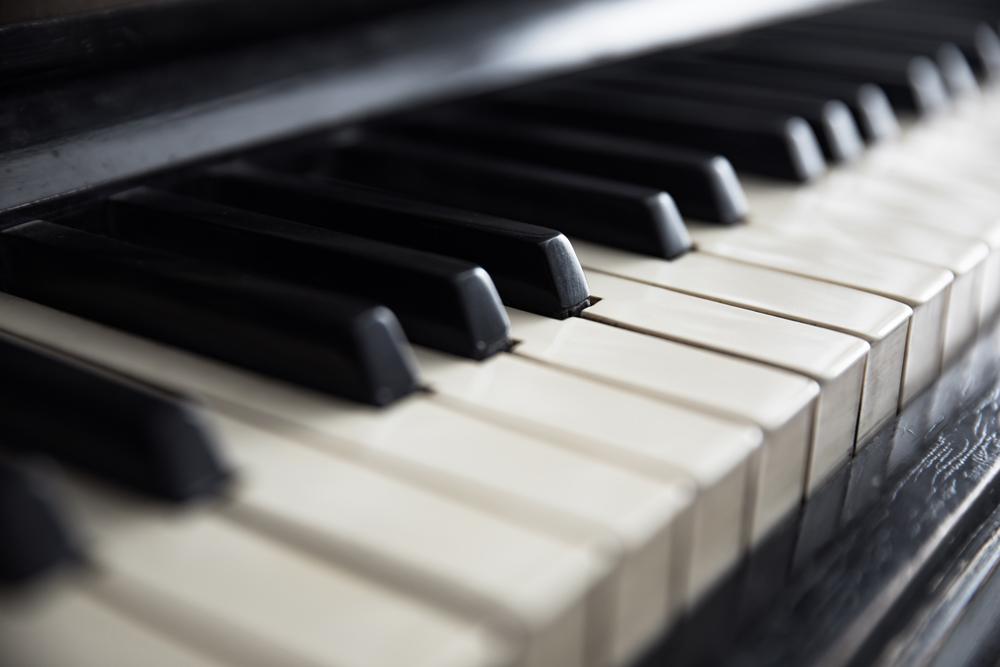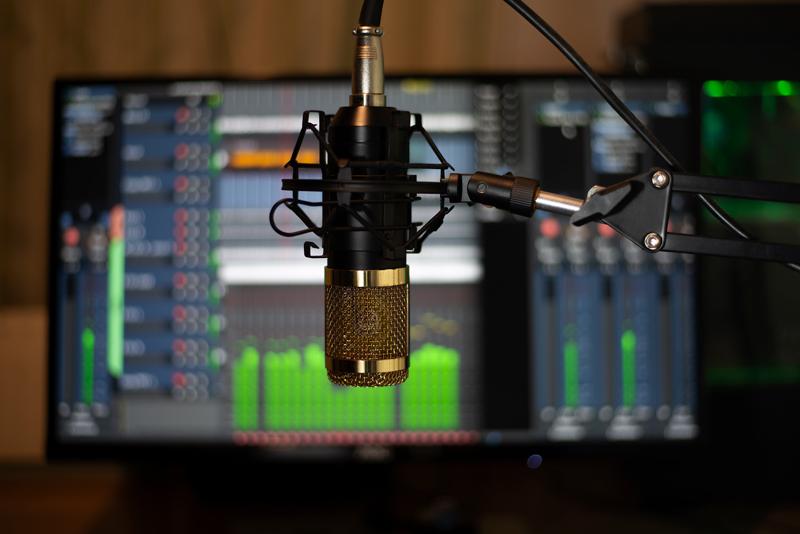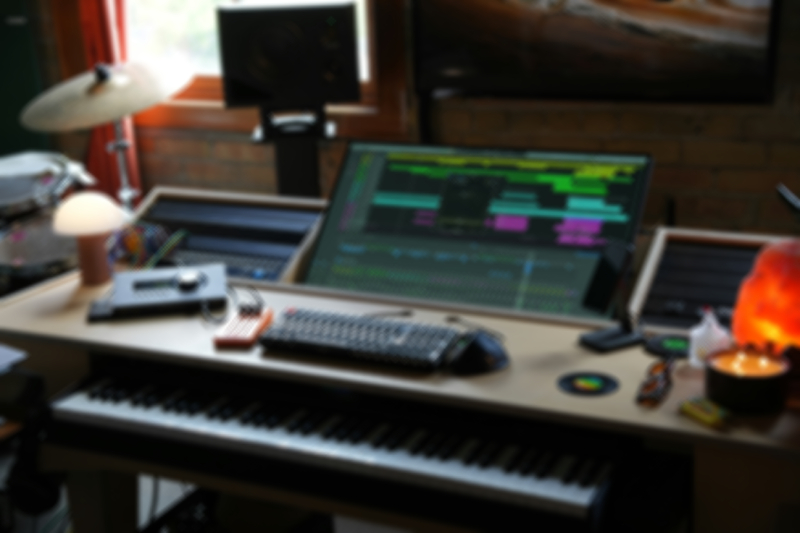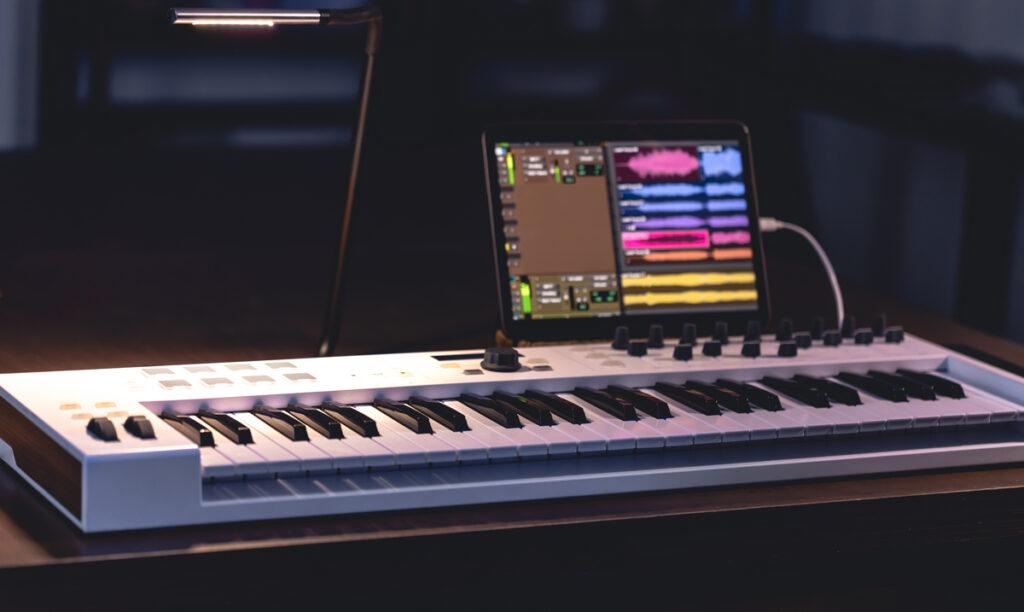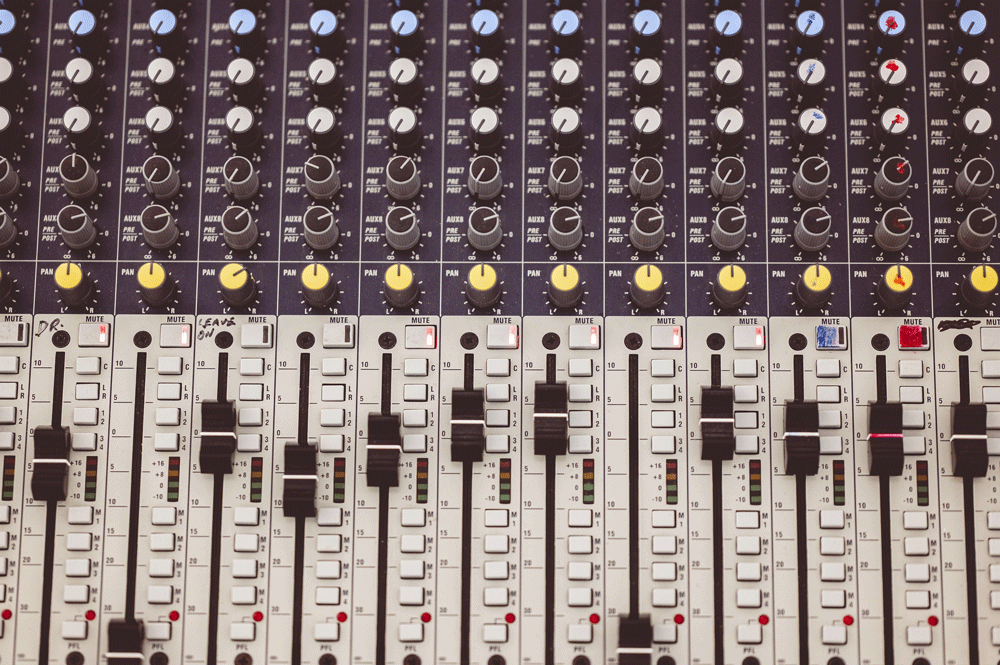The piano is a complex instrument that creates a lot of difficulties during recording and mixing. The piano can be present throughout almost all of the audible frequency spectrum, so it plays a very important role in a mix.
If it’s not a solo piano part but a part of an accompaniment for a song, it can interact with almost every instrument, mask, and clash with them, and with vocals as well.
Mixing piano poorly in a song will cause the piano part to hide in the mix and be unclear, make the music muddy, mask the vocal, or jump out with harsh, untamed transients. By the way, those transients can be very unpleasant to the ears and could spoil the overall impression your song will make on your fans.
The correct mixing, and your goal in mixing piano, should be for the piano to not clash with anything, to sound clear without muddiness, and to fit in the whole picture of the song perfectly.
There are no hard-and-fast rules for mixing piano, so we can’t give them to you in this article. Rather, we’ll share our piano mixing tips. We’ll explain the general principles and difficulties of mixing piano in a song and how we approach mixing piano in our studio.
How to prepare piano recordings
 There are different types of pianos and completely different styles of how a piano is supposed to sound, depending on the idea of each particular song. You can record a live piano or make piano tracks using VST plugins. Piano occupies such a wide range of frequencies that it can be present in most parts of the audible spectrum.
There are different types of pianos and completely different styles of how a piano is supposed to sound, depending on the idea of each particular song. You can record a live piano or make piano tracks using VST plugins. Piano occupies such a wide range of frequencies that it can be present in most parts of the audible spectrum.
Aim for the highest recording quality
The biggest impact on piano sound in a mix makes the quality of the recording or the quality of the sound of your plugin. If it’s a live piano, the recording process should be done very well. No amount of mixing can turn a poorly recorded track into a great sound. Use the best microphones. Record an upright piano or a grand piano with the lid open, aiming to capture the clearest sound.
Use the best VST plugins
If you use a plugin to create piano tracks, make sure the sound is very close to what you want it to be in the song. You need to listen to it and know that it already sounds good. It’s always better to switch the plugin than to try to improve the unfitting sound using EQ and other processing.
The bottom line is that you have to make sure the initial sound of your piano tracks that go into the mixing session is of the highest quality.
Want a free test mix of your track?
We get it.
That’s why we’ll do a full hybrid (analog + digital) mix of your song —
for free.
No upfront payment. No risk.
You only pay if you’re blown away. And if you are, we’ll slash 40% off the final price.
Nobody else in mixing and mastering offers this.
Why?
Because most studios say yes to every project. We don’t. We only mix what we’re excited about — so send us your best track. If we like it, we’ll mix it like it’s going to the Grammys.
👉 Just drop your name and email to get started.
Facing phase issues when mixing piano
 It often happens that, despite the high quality of piano recordings, when you join the tracks from your piano mics in the mix, the piano starts sounding shallow and weak and drops in volume. This happens because of the partial phase cancellation of the two sounds.
It often happens that, despite the high quality of piano recordings, when you join the tracks from your piano mics in the mix, the piano starts sounding shallow and weak and drops in volume. This happens because of the partial phase cancellation of the two sounds.
When you have mixed kick drum or bass live recordings, you may have seen how two mic recordings of the same instrument can get out of phase. Generally, phase issues are more threatening to the low frequencies and bass instruments; however, they destroy the piano sound very often, especially when it has a lot of information in the bass range.
Why does phase cancellation appear?
Phase cancellation happens when two or more microphones placed at some distance from each other record the same sound wave. Phase issues can appear, for example, between the room mic and the close-up piano mic. These recordings contain the same sound information but with a tiny shift in time between them. This constant shift results in attenuating and damaging the resulting sound when these recordings are played simultaneously.
How to deal with phase issues when mixing piano
If the problem is in the partial phase cancellation, it’s important to understand it correctly and treat phase issues, not trying to EQ or use other processing for this.
Note that inverting the phase will probably not help here. It may change the sound for the better and give you an idea that the phase problem is present in your mix. However, it will not produce the best sound possible; some phase issues will still remain unsolved. Inverting the phase works perfectly only in cases of total phase cancellation.
You may use several plugins that work with phase correlation to help get your tracks in phase with each other:
- You can correct the phase using phase settings in different plugins.
- A phase correlation meter can help you visualize how much phase cancellation there is.
- A phase alignment plugin can help you remove the issue.
- You may also simply experiment by giving one of the tracks a tiny offset in time compared to the other. Moving the track this way along the timeline by milliseconds, you can find the delay, which eliminates phase issues and makes the tracks sound loud and full together.
We also describe the causes of phase issues and how to eliminate them in our blog post How to mix a band. Check it out to get more information on mixing live recordings.
How do you mix and EQ a piano?
What kind of equalization to choose for piano tracks depends on the song and the recordings. There is no universal algorithm for how you should do it. Many things will affect your EQ decisions. Let’s look at some of them.
Piano EQ that corrects the frequency picture of the track
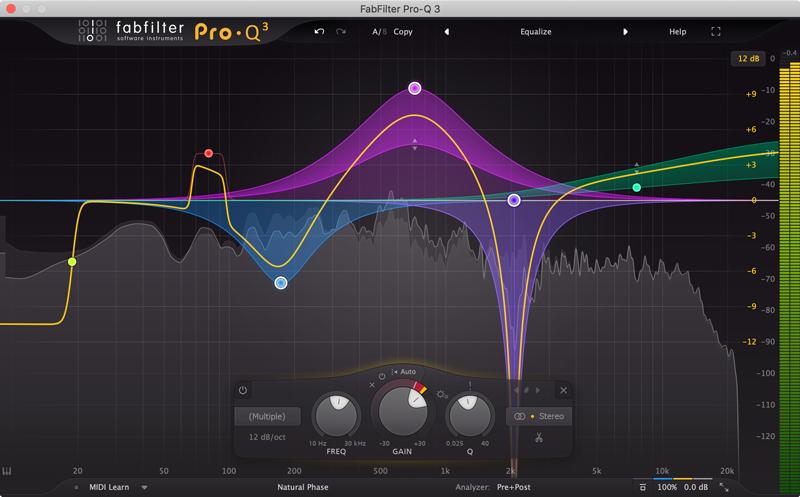 First of all, you use EQ depending on the piano timbre and frequency qualities of the piano track you have. In other words, you change how your piano sounds throughout the frequency spectrum.
First of all, you use EQ depending on the piano timbre and frequency qualities of the piano track you have. In other words, you change how your piano sounds throughout the frequency spectrum.
There is a huge range of sound qualities a piano can produce, its frequency range is from bass to treble.
For example, with an acoustic piano, different types of upright pianos can produce recordings ranging from dark and heavy to light and bright. And another thing is a grand piano, which has a completely different sound compared to an upright one.
Sometimes a piano sounding quite dark appears in a song that a customer sends us for mixing, and it may happen that in another song a piano recording sounds too light.
Using EQ piano, we correct the frequency picture and get the right sound.
You can apply subtract equalization throughout the frequency range where needed, and then use the volume fader to bring the volume up.
Piano EQ done depending on the style and genre
What kind of piano sound does your song require? Is it a rock song, a pop song, a classical piece, or something else? The genre, style, and individual idea of the song determine how the piano recording should be shaped.
Check how the piano is shaped in your reference tracks and try to equalize your piano part similarly.
EQ to free space for instruments and vocals
What instruments are playing together with the piano in the same frequency bands? All of them need to have space and cut through the busy mix, this is true for the vocals as well.
With eqing piano, free the space in the frequency spectrum by bringing slightly down frequency bands that are not essential for your piano but important for the acoustic guitar, for example, and other instruments. Use a high pass filter to clear the low end and make space for bass if needed.
Clean and emphasize piano with EQ
You may want to emphasize certain frequency bands where you need the main piano presence. Some frequencies bring out the essence and beauty of your piano, so you’ll want to bring them up a little.
You may also attenuate some problematic, unwanted frequencies if they are present in the recording. If you don’t like a detail in how the piano recording sounds, find the frequencies responsible and bring them down a bit.
How can I make my piano sound fuller?
If your piano sound is weak, you may try one of the following to enhance the low end:
- Bring the low end up a bit with EQ.
- Cut the upper end a little.
- Add a tape effect that will attenuate the higher frequencies.
- Apply a tube saturator like Saturn with the warm tube preset.
However, look, if it’s just a slight correction where up to two or three dB are added to the lower frequencies of the piano, that’s normal.
But if you find yourself adding around five or six dB to the lower frequencies in an attempt to make the sound fuller, then it would be better to use another piano track. You may want to re-record the piano part better or choose a fuller-sounding plugin if it’s a VST instrument.
Placing the piano in the stereo image
Now you need to decide on stereo imaging and how to pan the piano inside the stereo field. Where will your piano be in the mix? Will it be a mono piano or a stereo one? And how much space will it take?
Of course, if it’s the lead instrument in the composition, for example, if you are mixing solo piano music, you’ll treat it differently and give it all the leading positions in the mix. Most of the time, when mixing solo piano, you’ll want to make it upfront, wide, and ambient. But let’s look more at producing songs where the piano is part of the accompaniment along with other instruments.
Where do you put a piano in a mix?
The piano is almost always pushed a little backward and to the side in a song mix. You shouldn’t mix piano by placing it too far from the listener either, just not upfront.
At the same time, the vocal is placed upfront, close to the listener. A bass, a kick drum, and a snare drum occupy the middle of the composition.
However, each song is different, and there are many ways to create a unique and impressive stereo image of a song. Let’s look at some of the conditions that will affect your piano panning choices.
Panning piano to make space for other instruments
Moving the piano a bit to the side can help give space to other elements of the song and prevent clashing. For example, if an electric guitar plays inside the same frequency band as the piano, pushing the piano 30% to the left channel and the guitar 30% to the other side will free some own space for each of them.
Choosing a narrow or wide piano sound
In some songs that have many other instrumental parts, the ones that are overloaded with sound sources, you’ll aim to make a piano a point source and use a mono piano. You’ll place it at some point in a stereo field.
In some songs or compositions, however, you may want to play with a wider piano, giving it stereo width using different techniques.
How do you create a wide piano sound?
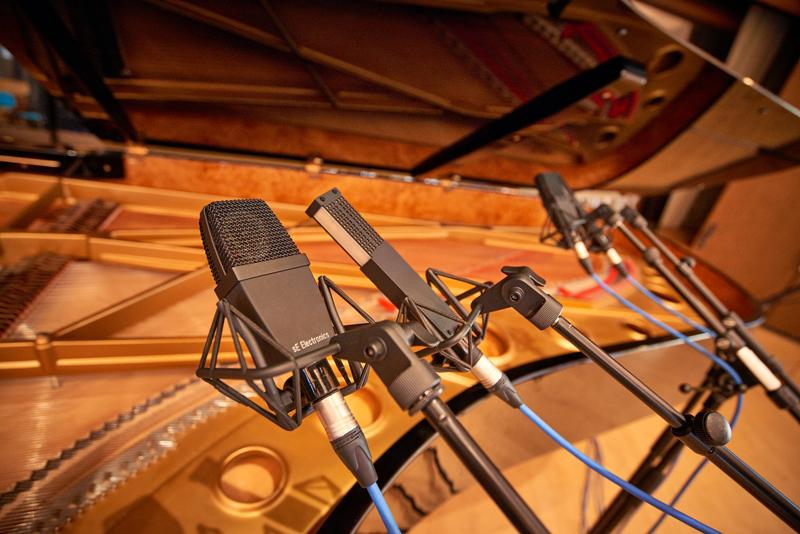 Make your piano embrace the listeners and sound all around them, or keep it a little ambient, wandering just a bit from a point sound source. It’s up to you to choose your mixing ideas. Here are some things you can do to make the piano sound wide.
Make your piano embrace the listeners and sound all around them, or keep it a little ambient, wandering just a bit from a point sound source. It’s up to you to choose your mixing ideas. Here are some things you can do to make the piano sound wide.
Use several microphone recordings
If you need a wide piano sound in your mix, you can use multiple recordings, placing them in different positions in the stereo field. It can be stereo recording with left and right close-up mics, or close-up and room mics, etc.
You can record a piano with a stereo pair of mics and receive a stereo recording for a close-up piano sound.
Double-take the piano part
As with other instruments, you may use the approach of recording two takes of the same part for the left and right channels.
Make the piano wider with reverb
Use a little reverb to make the sound wide, but be careful with it. Adding reverb too much may make the piano sound muddy, especially if it carries a lot of information at the low end.
Don’t apply a new reverb to each element of the mix, use the same reverb that you use for other instruments, or apply it to a bus. The same reverb will support the impression that the instruments are playing together in the same room. It can be a hall reverb or other reverb types, depending on the idea of the song.
Let stereo imaging plugins help you
A stereo imager can help you enhance the side channel compared to the mid channel if you want. Use stereo imaging plugins for widening carefully. Watch the balance of the mix and keep the center strong. Check the result in mono.
Compressing piano
To make the piano sound more powerful, tame the transients, reduce the dynamic range, and increase the loudness, you’ll use compression.
However, once you use compression a little more than needed, the piano’s tone will sound unnatural and lose its power.
Only in special cases, you can use strong piano compression settings, for example for some kinds of EDM, like David Guetta’s music, the piano can be over-compressed until it’s not recognizable as a piano anymore.
Otherwise, the piano should remain a pretty dynamic instrument, and the piano’s volume in the song should be natural, close to how a real piano would sound when the song is played live.
What is the best compressor setting for a piano?
These are the piano compression settings we often use in our studio: the ratio is 2 to 1, gain reduction is set around 2-3 dB, slow attack, and slow release.
However, there is no universal best compression setting for a piano. As we said earlier, piano parts can be so versatile in style and genre and their role in the mix, that the ratio, gain reduction, and compression speed may vary greatly from mix to mix.
Another piano compressing tip
I’ll share with you the approach that I often use for orchestral music with multiple instruments. First, I apply a slow plugin like Vari-Mu with a slower attack, and after that, I apply some more compression with a quicker compressor. In this case, Vari-Mu evens out the general dynamics of the song, while the second compressor will work on particular notes, taming their transients.
Want a free test mix of your track?
We get it.
That’s why we’ll do a full hybrid (analog + digital) mix of your song —
for free.
No upfront payment. No risk.
You only pay if you’re blown away. And if you are, we’ll slash 40% off the final price.
Nobody else in mixing and mastering offers this.
Why?
Because most studios say yes to every project. We don’t. We only mix what we’re excited about — so send us your best track. If we like it, we’ll mix it like it’s going to the Grammys.
👉 Just drop your name and email to get started.
Not sure if you can mix piano right for your song? Leave it to us!
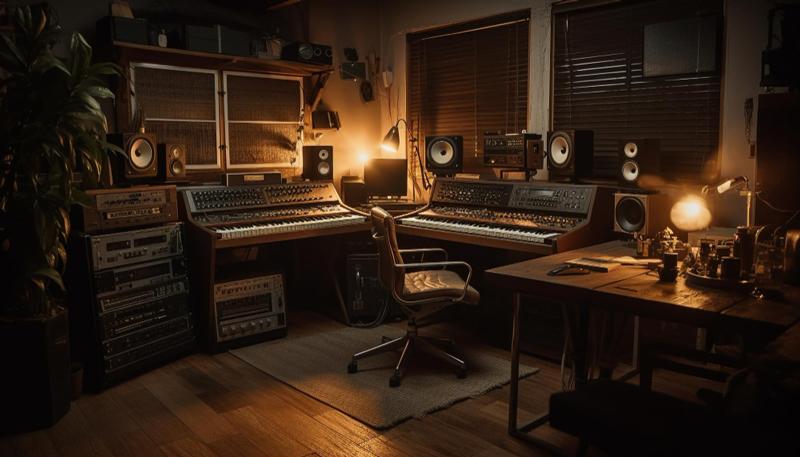 Major Mixing is a professional mixing and mastering studio. Every day, we receive requests from our customers to mix songs that contain one or more piano tracks. It can be a VST instrument or a live recording from a set of microphones.
Major Mixing is a professional mixing and mastering studio. Every day, we receive requests from our customers to mix songs that contain one or more piano tracks. It can be a VST instrument or a live recording from a set of microphones.
Of course, it’s best when the recordings are done correctly with high-quality mics. However, sometimes we have to mix piano recordings that are too dark, lack the fullness of the sound, or have other flaws.
All our engineers are professionals and know how to mix a song in each of the cases. Sometimes, when it’s better for the song, we ask the customer’s permission to replace the track or ask the customer to send us a better-recorded piano.
In any case, the mix we create at Major Mixing will always be of the highest quality and match all industry standards.
When you just start mixing, it’s difficult to know how to deal with an instrument with such a huge frequency range. You may not be sure of how to mix a song where the piano sounds perfect and sits well in the mix while giving vocals and other instruments their own space.
If you have even the slightest doubt that you’ll create the best possible mix for your song, leave this task to us. We have created thousands of mixes and keep our fingers on the pulse of the industry, watching for the latest trends and requirements. We can give your mixes the best shot to compete in the industry today.
We provide a full range of services, from music production and consulting to mixing and mastering your song, making it ready for release. Contact us now, we are here to help you boost your career!

